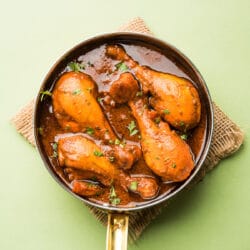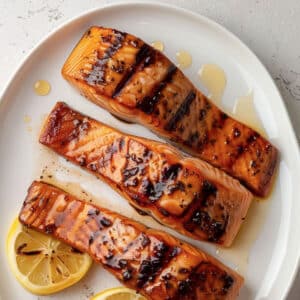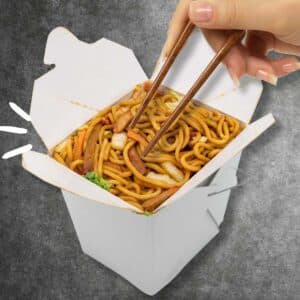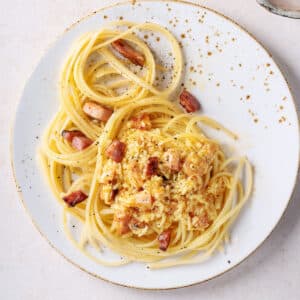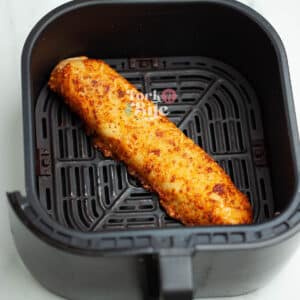Even the tiniest bit of leftover curries, such as spicy Indian curry or delicate Thai curry, shouldn't be thrown away. After all, curry tastes better the next day, don't you think? We can all disagree on how to reheat curry, though.
So how long to reheat chicken curry in a microwave? Here's a quick answer. Depending on the size of the serving, the time required will differ. According to general guidelines, you should heat the curry for approximately two to five minutes. In the case of frozen curry, it may take longer.
Important: Reheating curry should be done with caution. Don't blast it with high heat; it should be done slowly. Start by heating the dish for 60 seconds, and then add 30 seconds at a time, continuing to heat until the soup has reached the desired temperature. Ensure that you stir the curry intermittently to prevent cold spots and frost. Before serving, allow it to stand for 30 seconds.
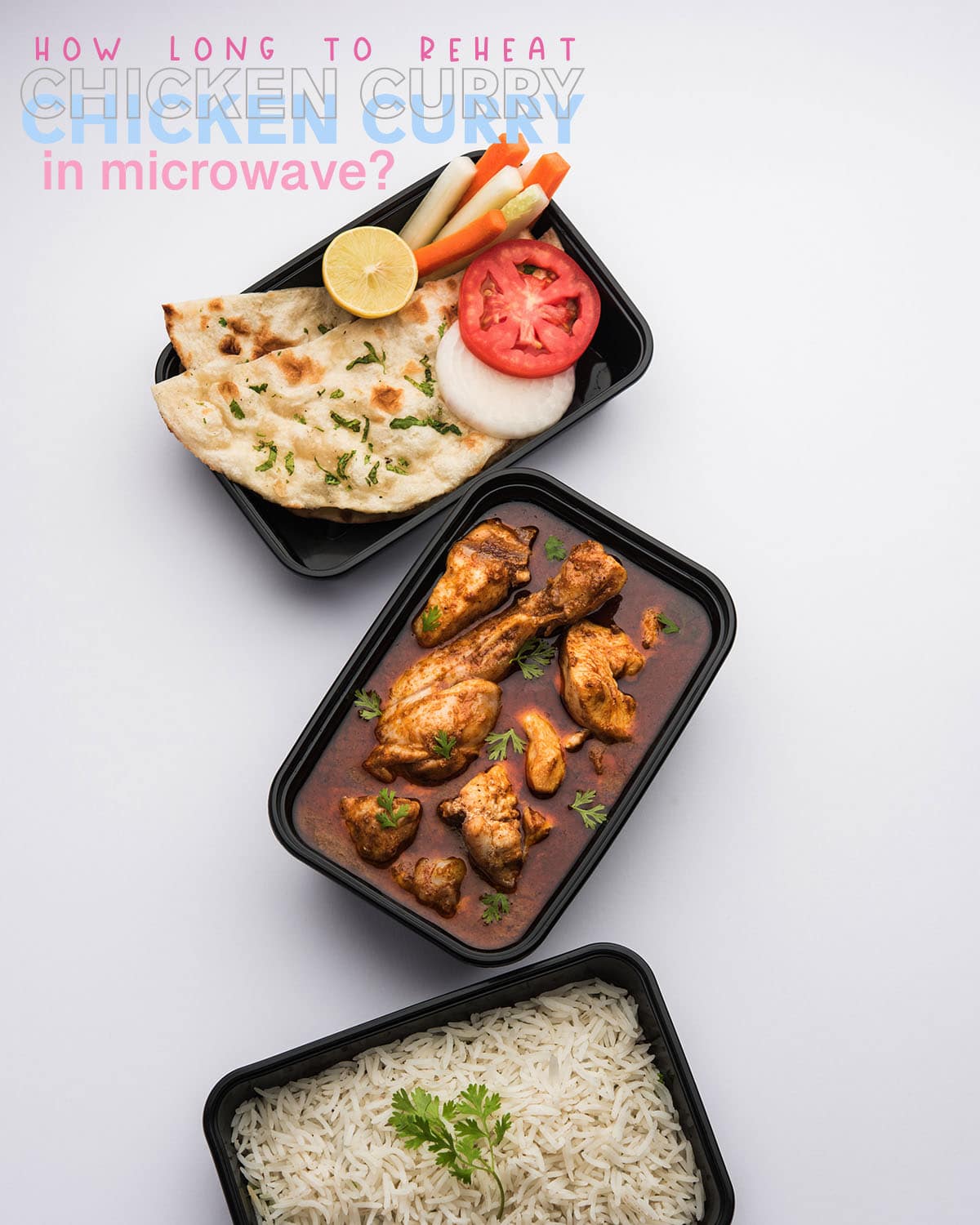
Why does curry taste better the next day?
Charles Spence, a food scientist at the University of Oxford, says curry flavors can diffuse more evenly after spending the night in the fridge. A curry may contain different kinds of spices, but they are all meant to blend harmoniously so that no single element stands out.
The longer meat remains in a sauce, the more flavors it will absorb. Aside from that, the collagen in meat degrades as it simmers while cooking. Rested in the fridge for a few hours, it will set to a jelly-like consistency; when warmed, the gelatin liquefies and creates a silky mouthfeel.
Note:
When a dish is wet, it will microwave better than one that is dry. In other words, the wetter the dish is, it performs better in the microwave, and oil will conduct more heat than water.
How long to reheat curry in microwave?
The amount of time required depends entirely upon the size of your serving. A general guideline is to heat the curry for approximately two minutes but not for more than five minutes. It may take much longer if the curry is frozen.
Use caution when reheating curry. Avoid blasting it at high temperatures; heat it gently at a medium temperature. Heat it for 60 seconds at first and then 30-second increments until it reaches the desired temperature. Don't forget to stir the curry intermittently to avoid any frosty areas or cold spots and give it a 30-seconds stand before serving it.
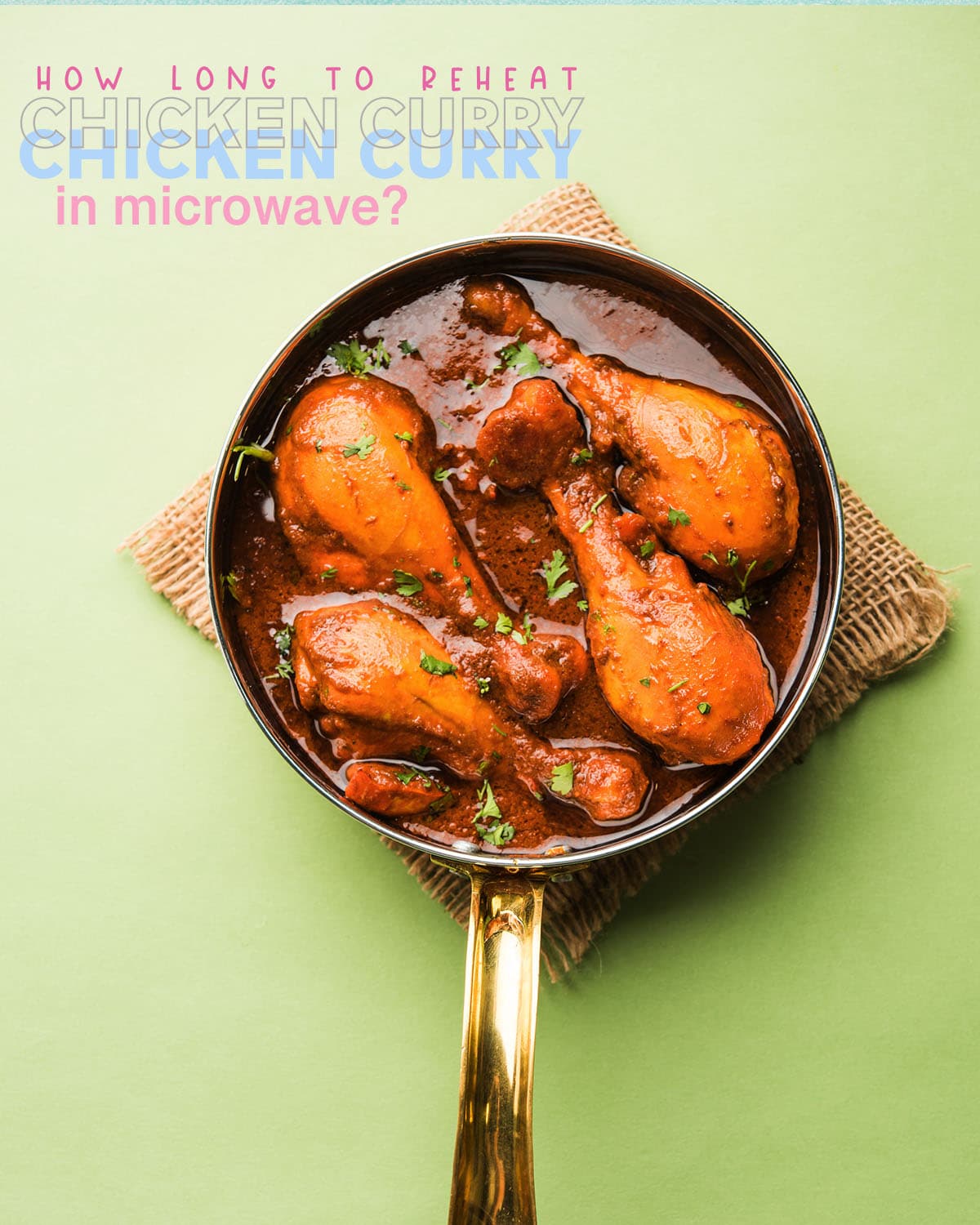
How to reheat curry in a microwave
Reheating curry in the microwave can be done quickly and easily. For the dish to generate steam, ensure the dish's contents are entirely covered making a small vent to let the steam escape. [source].
You can proceed as follows:
Step 1 Place in a round heat-resistant bowl
Grab a round heat-proof bowl and pour your curry in. As you assemble the curry, spread it evenly around the bowl to maintain even heating. When food comes in different shapes, arrange the thicker parts (such as protein cuts or vegetables) further away from the center along the outer edges.
Sidenote:
Do you know what it's like to be extremely hot on the outside but marginally warm in the middle? To microwave leftovers effectively, food placement is essential. In containers with square or rectangular corners, the energy transfer tends to be greater in these areas, which might cause the food to overcook.
Step 3 Cover your food
Dampen a paper towel and drape it over the dish. Make sure you do this, especially if you're concerned about microwave stains caused by curry splatter. Or use a cling wrap to trap steam and reduce mess. Make a small opening or vent in the cover to provide a point of escape for steam. Moreover, using a lid or plastic wrap will allow food to stay moist, thereby cooking more uniformly. Avoid letting the plastic wrap or cover touch the hot food.
Consider this rule when deciding whether a lid is necessary: Any food that's covered in the oven needs to be covered in the microwave.
Related Reads:
How do you microwave food without drying it out?
Heat up leftovers along with a cup of water in the microwave. An excess of radiated microwave energy will be absorbed by water and help prevent overcooking. You'll also notice that steam will release, keeping your food moist.
Step 3 Reheat using a medium-high setting (70% power).
- Pop the food inside the microwave and use the keypad on your microwave to select your food cooking time. We are heating the curry for 60 seconds initially. What kind of food you are reheating dictates what power setting to use.
- Hit the "power" button on your microwave and choose the power level. After entering your power percentage, press "Start" to begin cooking. You can remove the preset by pressing the corresponding number of the power level. To set the microwave to cook at 70% power, press "7 and 0."
- After zapping for 60 seconds, stir the food to distribute the heat uniformly, avoiding cold areas. Proceed in 30-second increments until it reaches the desired temperature. Let it stand for 30 seconds before serving.
| Power level (watts) | Recommended for: |
|---|---|
| High (800W+) | Ideal for: Warming soups and drinks. Steaming vegetables, poultry, and fish, minced and tender meats. |
| Medium-High (600-800W) | Reheating ready-made meals and leftovers, cooking casseroles or stews. |
| Medium (400-600W) | Slow-cooking drier meats such as ham or pork, bigger joints of meat or whole poultry or fish |
| Low (100-400W) | Defrosting, softening butter, heating bread, or keeping food warm |
How to reheat curry with coconut milk or yogurt?
Most commonly, stews like curries freeze well because the meat and vegetables are fully submerged in liquid, minimizing the risk of freezer burn (water evaporating from the surface of food). Curry made with tomatoes, and stock freezes exceptionally well.
However, curry made with coconut milk can have variable results, but the coconut milk is still usable, although it may appear grainy. If you freeze coconut milk on its own, you may notice a slight separation when unfrozen.
Since the other ingredients stabilize it, coconut milk in curry sauces should freeze well. Even so, there is still the possibility that it may split when it thaws. Coconut milk is at greater risk if it makes up a high proportion of the sauce ingredients and if it is frozen for an extended period. The texture may be slightly grainy, but it is OK to eat.
The use of heavy cream in curry dishes has the advantage that it is freezer friendly. When using low-fat (light) cream or yogurt, you should not freeze it since they are prone to splitting when defrosting or reheating.
Extra Note:
You should heat thawed food to a piping hot temperature, but low-fat dairy products tend to separate with this heat level. Rather than freezing the curry with cream or yogurt, it would be better to stir them in after it has been reheated.Remember:
Put the curry in airtight containers and freeze enough portions for future use. Consider adding a label indicating what's inside and when, and you should not freeze longer than three months.
Can you reheat chicken curry and rice?
If you properly store both chicken curry and rice in the refrigerator, it is possible to reheat them. When reserving chicken curry and rice for later, you should not leave them sitting on the counter for more than two hours.
Food left at room temperature for more than two hours can become contaminated. Even after being reheated, there is no guarantee they are safe to consume.
However, from the look of things, we have been reheating our food incorrectly. Based on a video posted on the BBC online channel Brit Lab, we are becoming more and more prone to consuming improperly reheated leftovers due to poor food handling practices.
Rice contains bacteria spores that are resistant to cooking and reheating, creating health risks. Toxins produced by these bacteria, known as Bacillus cereus, can cause food poisoning when they multiply.
Rice that has been re-heated may hold these spores, which release toxic compounds and cause diarrhea and vomiting.
Our lax attitude towards heating up the rice makes us vulnerable to getting sick from reheated curries. There is bad news, heat won't stop these microbes from spreading.
Michael stresses the significance of reheating food to 82° C; otherwise, potential pockets of bacteria may remain in the food.
Another important factor? The instructions for all those ready-to-eat meals seem to have been correct. Halfway through the cooking process, carefully stir the food until thoroughly heated.
How to reheat chicken curry and rice?
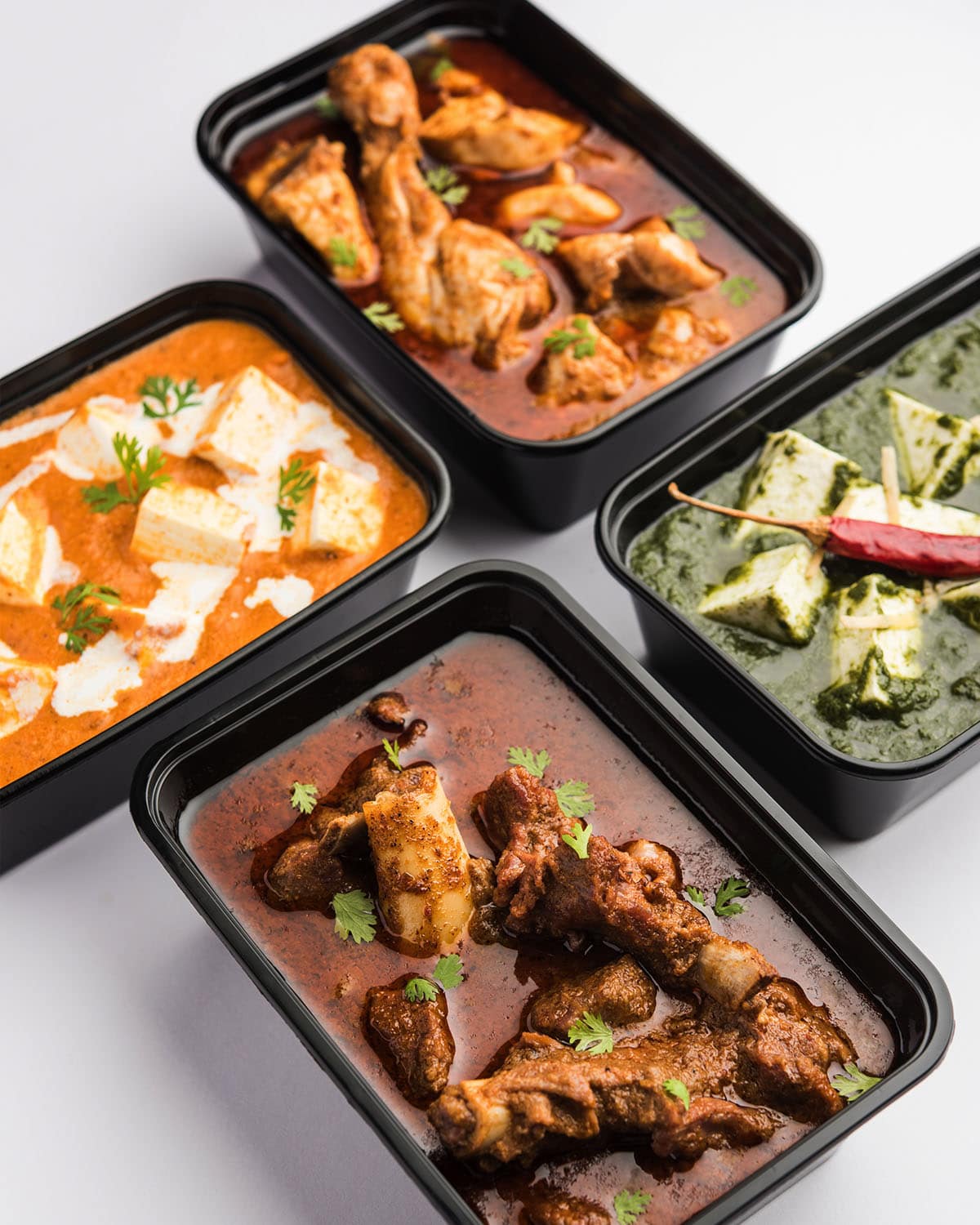
Heat the curry in a pan over a low flame. Continually stir the sauce to keep it from sticking to the bottom of the pan. Adding some liquid or a dash of oil is better to make refrigerated curries less clumpy. Continue to heat to the temperature you desire. Allow the food to stand for 30 seconds before serving.
Alternatively, you can reheat chicken curry in the microwave by putting the dish on a circular heat-resistant plate. Using the same method as above, first zap the curry for 60 seconds.
Next, stir the curry to ensure that all areas of the curry are evenly heated. Continue heating the curry for 30-second increments until it is piping hot. In addition to providing even heat distribution, constant stirring ensures that the curry's texture is maintained.
For the rice:
Reheating rice in the microwave is the fastest method. Prepare your rice by placing it in a microwave-safe bowl or container. Stir in one tablespoon of water for every cup of cooked rice, which provides moisture during the re-steaming process.
Put a moist paper towel over the bowl or container and microwave the rice for 60 seconds. At the end of the microwave cycle, remove the towel and gently mix the rice.
After that, cover the container with the towel again (remoisten the paper towel if necessary). Pass the rice through the microwave for one additional minute to ensure it is well heated. The rice needs to be hot to the touch. If there are any rice clumps after it's done, break them up with a fork.
Quick Tip:
If you plan to consume cooked rice the next day, let it cool completely and place it in the refrigerator within one hour of preparing it. Rice leftovers should be consumed within three days or frozen for three months.
The best ways to reheat leftovers in the microwave
Tips to prevent food from drying out in the microwave. Microwaves may be notorious for drying out food and causing streaks of cold spots in your dish. A simple change to your plate arrangement, how long you let your food sit, and even the serving container you use can influence how your food comes out. Today's microwaves can instantly turn mediocre dinners into family favorites.
Here's how to improve leftovers' taste with a few simple changes.
1 Arrange food evenly on the plate.
To ensure an even cooking process, make sure the food is flattened evenly on the plate. While it may seem like a good idea to heap more food on your plate, this plate arrangement won't work well in the microwave due to the edges heating up much faster than the thicker center area.
This issue is common, especially if your microwave is inconsistent with heat distribution. Therefore, make sure your food is spread thinly on the plate around a central point and position denser pieces closer to the edge to ensure even cooking and minimize cold areas.
Related Recipes:
2 Be sure to maintain the moisture.
It's a known fact that microwaves tend to dry out food. When were the last time you tried to reheat leftover pasta only to find burned sauce and soggy spaghetti?
As a precaution, drizzle some liquid like stock or sauce on the food before it goes into the microwave. If you prefer, drape a damp paper towel over the plate for steam to build up, and you won't have to worry about messy microwave splatters.
3 Heat up in intervals.
Have you heard of "nuking" food? Food is not rendered radioactive by microwaves. The process is straightforward: microwaves reverberate an electromagnetic field, stirring water molecules around your food, thus, generating heat. Agitation could turn a leftover or frozen dish into an instant meal.
If you want your food to be heated evenly, cook for 30 seconds to 1-minute bursts. Stir liquids regularly and flip solids in-between turns to ensure even heating. This technique leaves oil- and butter-based sauces unscathed, allowing the dish to retain its original flavor.
4 Have patience and allow it to stand
There's a temptation to dig at the moment the timer buzzes but standing back and letting food rest once the microwave shuts off can make a big difference.
Microwaves heat up by radiating heat outward. As soon as the microwave is turned off, the heat continues to propagate to the center. Stand-by time permits the center to cook through, without burning or overcooking the outside edges.
5 Check the power level
Don't turn the power up to full blast when you are rushing to prepare dinner. When cooking certain foods at high temperatures, they can be dried out even before the middle is ready.
- Turn up the power when warming things with a lot of liquid, such as stew or soup, or when reheating dense foods.
- Reduce the power when heating leftovers, ready meals, and slow-cooked foods, like casseroles and meat.
6 Choose the right container
Choosing a container that is not microwave-safe can prevent your food from cooking efficiently, ruin your microwave, or even make food inedible.
Which materials are safe for use in a microwave?
Keep it simple in terms of microwave cooking: if there is no written or graphical indication that something is heat-resistant, refrain from using it. For further information, you can check FDA.gov
Having said that, you can use the following materials in microwaves:
- Glass/ceramic: Unless labeling indicates otherwise, either item is safe for microwave use. Both are unaffected by radiated energy of that frequency and do not overheat when placed in a microwave.
- Plastic: A container bearing an FDA-approved microwave-safe icon or the words "microwave safe" complies with FDA standards. Provided the plastic remains free of defects or dents, such a container is microwave safe. Many consumers are indeed concerned about plastics leaching chemicals into food; in that case, switching to glass or ceramic is not a problem.
- Paper: Nearly all paper plates, napkins, and paper towels can go in the microwave; however, some are plastic coated, so it is best not to microwave them unless the label indicates they are microwave safe.
Non-microwave-safe materials include:
- Metal: Metal bounces right off microwaves, making it inefficient for microwave cooking. Likewise, tin foil is a no-go, as its thin or pointy edges are prone to conduct electricity and may cause damage to your appliance.
- Styrofoam: FDA-certified containers made of Styrofoam are available, but these are prone to scratching and cracking, making them an unreliable option.
- Disposable plastic: Disposable containers such as plastic jars, and yogurt tubs, are not suitable for use in the microwave.
It is best to use ceramics and glass containers that are microwave safe.
Detecting microwave-safe containers
The easiest way to determine whether a container is microwave safe is to do the following test:
- Prepare a dish suitable for microwaves by filling it with cold water.
- Microwave for one minute.
It's microwaveable once the container is cool to the touch while the water is hot. When the container has a warm surface, it absorbs microwave energy, thus proving ineffective for microwave cooking.
8 Use a circular or oval container
The shape of your dish influences how evenly your food cooks. Meals in the corners of a square or rectangular container are often subjected to intense microwave heating, resulting in dry, overcooked food.
Choose an oval or round dish to ensure a more even cooking process whenever a large casserole or chili needs to be heated. And when adding heat to a tub of soup, try pouring it into a plate or dish with a rounded rim.
How to reheat Chicken curry in microwave (How to guide)
Pin RecipeEquipments:
- Microwave
Ingredients:
- leftover chicken curry
Instructions:
Step 1: Place it in a round heat-resistant bowl
- Grab a round heat-proof bowl and pour your curry in. As you assemble the curry, spread it evenly around the bowl to maintain even heating. When food comes in different shapes, arrange the thicker parts (such as protein cuts or vegetables) further away from the center along the outer edges.
Step 2: Cover your food
- Dampen a paper towel and drape it over the dish. Make sure you do this, especially if you’re concerned about microwave stains caused by curry splatter. Or use a cling wrap to trap steam and reduce mess.
- Make a small opening or vent in the cover to provide a point of escape for steam. Moreover, using a lid or plastic wrap will allow food to stay moist, thereby cooking more uniformly. Avoid letting the plastic wrap or cover touch the hot food.
Step 3: Reheat using a medium-high setting (70% power).
- Pop the food inside the microwave and use the keypad on your microwave to select your food cooking time. We are heating the curry for 60 seconds initially. What kind of food you are reheating dictates what power setting to use.
- After zapping for 60 seconds, stir the food to distribute the heat uniformly, avoiding cold areas. Proceed in 30-second increments until it reaches the desired temperature. Let it stand for 30 seconds before serving.
- Let the food stand for 30 seconds before serving.
Notes:
Sidenote:
Do you know what it’s like to be extremely hot on the outside but marginally warm in the middle? To microwave leftovers effectively, food placement is essential. In containers with square or rectangular corners, the energy transfer tends to be greater in these areas, which might cause the food to overcook.How do you microwave food without drying it out?
Heat up leftovers along with a cup of water in the microwave. An excess of radiated microwave energy will be absorbed by water and help prevent overcooking. You’ll also notice that steam will release, keeping your food moist.Please note that all nutrition information are just estimates. Values will vary among brands, so we encourage you to calculate these on your own for most accurate results.

